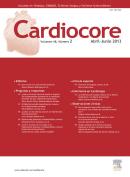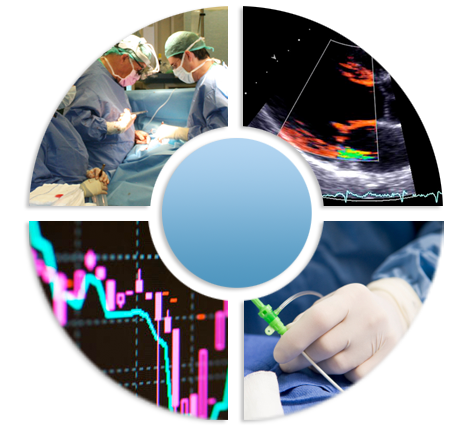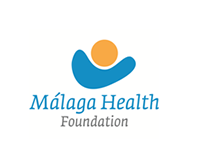Acceso de los editores
What is the role of surgery in thromboembolic pulmonary hypertension? Pulmonary endarterectomy
Eingesendet von. Dr. Carlos Porras Der Artikel wurde in Cirugía Cardiaca publiziert und mit den Tags pulmonary hypertension, endarterectomy, acute pulmonary embolism, NYHA, cardiac surgery versehen«What is the role of surgery in thromboembolic pulmonary hypertension? Pulmonary endarterectomy»
Carlos Porras, Hans-Joachim Schäfers
Cardiocore 2013; 48:65-8.

Chronic thromboembolic pulmonary hypertension (CTEPH) is an infrequent sequela of acute pulmonary embolism that develops in 1 to 4% of individuals, in whom thrombus material is not dissolved but organized into scar tissue. Remodeling of previously unaffected pulmonary arteries ensues, the patients develop progressive pulmonary hypertension (PH) and right heart failure. The diagnosis can be confirmed by ventilation/perfusion scanning and CT. Pulmonary angiography will give additional information, in particular with respect to central extension of scar. The administration of pulmonary vasodilators is of limited value in CTEPH. On the other hand, this disease can be treated causatively by pulmonary endarterectomy (PEA).
The operation requires a a high degree of precision. The chest is opened via a median sternotomy and the patient cooled to a nasopharyngeal temperature of 20°C. The central pulmonary arteries are opened, and a closed endarterectomy of the involved pulmonary arterial bed is performed. Postoperative intensive care involves careful management to avoid complications related to residual PH.
With careful patient selection the hospital mortality is less than 5% in patients with preoperative heart failure class III NYHA. The hemodynamic and clinical results are impressive. Pulmonary vascular resistance is markedly reduced within the first 48 hours, and a further reduction if often seen in the subsequent weeks. The patients are drastically improved in their exercise ability; in the majority of patients the hemodynamic and clinical improvement persists beyond 5 years postoperatively.
|
|

- Avenida de los Argonautas, s/n, 29630, Benalmádena, (Málaga)
- Telefonnummer:
(+34) 952 367 190
Gemeinsam sind wir stark

Das Institut für Kardiotechnik vereint das Know-how aus vier Klinikbereichen, um erstklassige kardiologische Behandlungsleistungen zu erbringen.
ICTA: als Team am Puls der Zeit.
Los más leídos
- ¿Qué esperar tras su operación de corazón? (91411 hits)
- Estoy en tratamiento para la hipertensión arterial. ¿Son fiables los aparatos que miden la presión arterial de forma automática? (62961 hits)
- Aneurismas de aorta ascendente: ¿cuándo hay que operar? (53547 hits)
- Insuficiencia aórtica severa: ¿cuándo hay que operar? (36577 hits)
- Evaluacion de los antiinflamatorios en el riesgo cardiovascular (Diclofenaco, Ibuprofeno y Naproxeno) (33439 hits)
- Me voy a operar del corazón. Preguntas frecuentes (FAQ) (33075 hits)
- ¿Qué debe saber si se va a operar del corazón? (32041 hits)
- ¿El consumo moderado de alcohol es bueno para el corazón? (31039 hits)
- Valvulopatías (enfermedad valvular cardiaca): Generalidades (30366 hits)
- El sexo y las enfermedades cardiacas: ¿es seguro el sexo en pacientes con enfermedades del corazón? (27996 hits)
- Trucos para pacientes en autocontrol de tratamiento anticoagulante con Sintron o Warfarina (24763 hits)
- Tratamiento médico de la insuficiencia aórtica (24340 hits)
Nube de etiquetas
Arrhythmien
Auf der Arrhythmien-Station der Herz-Abteilungp behandeln wir Patienten mit Herzrhythmusstörungen. Die Station setzt sich aus zwei spezifischen Bereichen zusammen.
Marfan-Station
Multidisziplinäres Team zur Diagnose, Kontrolle und Behandlung von Patienten mit Marfan-Syndrom.
Herzchirurgie
Die Behandlungstechniken moderner Herzchirurgie: Koronarchirurgie mit und ohne extrakorporalen Kreislauf, konventionelle Herzklappenchirurgie, usw.
Aortenklappen-Station
Pionierteam in der Aortenklappenrekonstruktion. Wir führen Eingriffe an Aortenwurzelaneurysmen in perfekt ausgestatteten Operationssäulen durch.
Klinische Kardiologie
Elektrokardiogramm (EKG), Ergometrie und Echokardiogramm: Praxen in Benalmádena (Krankenhaus Hospital Xanit) und in Fuengirola.
Plötzlicher-Herztod-Station
Früherkennung der Ursachen von Koronarerkrankungen, die zum plötzlichen Herztod beim Sport führen können.
Hämodynamik
Koronarangiographie, Untersuchung von Patienten mit Herzklappenerkrankung:: angeborene Herzfehler beim Erwachsenen, transseptale Katheterisierung, usw.
Kardiologische Rehabilitation
Fachservice zur vollständigen Rehabilitation von Patienten nach An gi na Pec to ris, Herzinfarkt, Operationen, usw.













